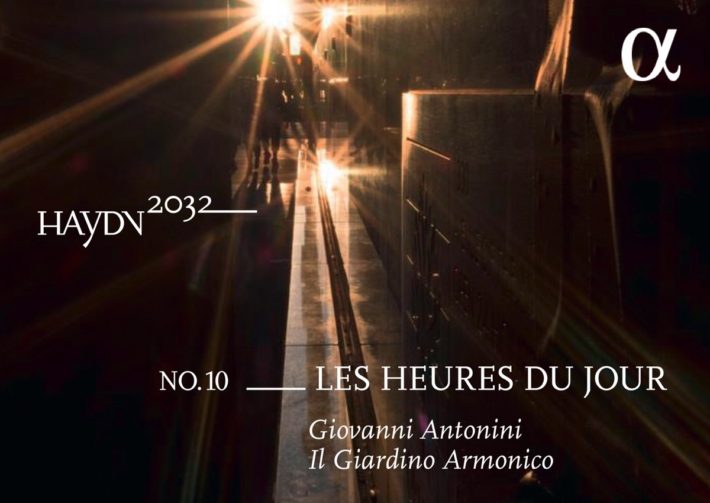Read all of our reviews of Antonini’s “Haydn 2032” series releases
In 1761 Haydn was appointed vice-Kapellmeister to Prince Anton Esterházy. One of the prince’s first requests was a series of ‘quartets’ that would depict times of day – Symphonies Nos. 6-8 were Haydn’s response to that request. The decision to write symphonies instead of quartets was typically shrewd: the prince had recently enlarged his roster of musicians, now having enough players to perform not just chamber music but also substantial orchestral works.
Moreover, Haydn knew his employer loved the music of Italy, so he includes numerous solo passages in each symphony, relating the symphonies to Italian concerto form. The first violin and cello each have several solos, as do the flute, oboe, bassoon and even the double bass. The opportunity to hear his newly hired players demonstrate their individual (and corporate) virtuosity must have pleased the prince (and the players).
The sixth symphony, subtitled “The Morning”, opens with a vivid depiction of the sunrise (an effect Haydn would return to in “The Creation” decades later). The last movement of Symphony No. 8, subtitled “The Evening,” portrays a storm – purportedly the prince’s own idea. These are the most specific pictures ‘painted’ by Haydn, though most listeners will surely find other imagery summoned by Haydn’s music.
These works arguably warrant more recordings than they have received. Over the last three decades a few recordings of note have appeared: Pinnock’s 1980s performances with the English Concert (Archiv) discovered a playful humor that Dorati’s classic recording downplayed. Nicolas Ward’s fine performances with the Northern Chamber Orchestra (Naxos) showed how successfully period performance ideals can apply to modern instruments in readings of infectious energy and commitment. In 2008, the Freiburg Baroque Orchestra, led by concertmaster Petra Müllejans, entered the fray and swept the field, in performances of eloquence and nuance that revel in the period instrument sonorities.
Related Classical Music Reviews
- Review: Haydn – Complete Symphonies (Vol 7 – No. 9, 65, 67) – Antonini
- Review: Haydn – Complete Symphonies, Vol. 8, “La Roxolana” – Antonini
- Review: Haydn – Complete Symphonies, Vol. 9, “L’Addio” – Antonini
These new performances by Il Giardino Armonico and Giovanni Antonini are perhaps finer still. Haydn’s string writing is played with great precision and verve. The same can be said of the Freiburger performances, but there is an additional Italianate passion and joy-de-vivre in Il Giardino Armonico’s readings that makes the Freiburgers seems a bit too strait laced. In the sixth symphony, just listen to how masterfully Antonini and his orchestra build the initial climax depicting the sunrise. Or how much room he gives his players to shape their solos in the slow second movement and in the beguiling trio of the third movement (featuring particularly fruity bassoon playing). And the horns in the final movement (indeed, throughout the CD) are simply thrilling. Considerable care has been taken to shape each phrase, and there is a vocal fluency here that is often absent from Hogwood’s readings with the Academy of Ancient Music (Decca). Il Giardino Armonico offer not only accuracy and precision, but strong and vivid characterization, the result of a group that clearly listens to one another and fully inhabits the spirit of Haydn’s writing.
Antonini’s tempos are, as usual, on the quick side, but never sound breathless. In fact, it is only in the Minuets that his tempos are significantly faster compared to other performances. That might make them more difficult to dance to, but they have a delicate buoyancy that is entirely convincing.
Mozart’s “Serenade in D” (Serenata Notturna) is an apt and inspired choice to complete the album. It is performed with panache, the joy of the final movement palpable – I could not help smiling as I listened, which is surely what the composer intended.
In short, the excellence of previous entries in this series is maintained. Il Giardino Armonico seems completely at home in this music and their playing of this music seems absolutely right – while listening it is hard to imagine a more convincing interpretative approach. Liner notes and artwork are excellent, and the engineered sound allows just the right amount of warmth without any sacrifice in clarity.
Many years ago, as Hogwood’s incomplete cycle was being issued (now available as a boxed set at bargain price), it seemed to be a significant advance in the performance of Haydn’s symphonic oeuvre. But Antonini’s new series has raised the bar considerably.

“Haydn 2032, Vol. 10 – “Les Heures Du Jour“
Symphonies 6-8
Il Giardino Armonico
Giovanni Antonini – Conductor
Recommended Comparisons
Read more classical music reviews or visit The Classic Review Amazon store
Follow Us and Comment:
Get our periodic classical music newsletter with our recent reviews, news and beginners guides.
We respect your privacy.








